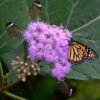Psychologists know that childhood trauma, or the experience of harmful or adverse events, can have lasting repercussions on the health and well-being of people well into adulthood. But while the consequences of early adversity have been well researched in humans, people aren’t the only ones who can experience adversity.
If you have a rescue dog, you probably have witnessed how the abuse or neglect it may have experienced earlier in life now influence its behavior – these pets tend to be more skittish or reactive. Wild animals also experience adversity. Although their negative experiences are easy to dismiss as part of life in the wild, they still have lifelong repercussions – just like traumatic events in people and pets.
As behavioral ecologists, we are interested in how adverse experiences early in life can affect animals’ behavior, including the kinds of decisions they make and the way they interact with the world around them. In other words, we want to see how these experience affect the way they behave and survive in the wild.
Many studies in humans and other animals have shown the importance of early life experiences in shaping how individuals develop. But researchers know less about how multiple, different instances of adversity or stressors can accumulate within the body and what their overall impact is on an animal’s well-being.
Wild populations face many kinds of stressors. They compete for food, risk getting eaten by a predator, suffer illness and must contend with extreme weather conditions. And as if life in the wild wasn’t hard enough, humans are now adding additional stressors such as chemical, light and sound pollution, as well as habitat destruction.
Given the widespread loss of biodiversity, understanding how animals react to and are harmed by these stressors can help conservation groups better protect them. But accounting for such a diversity of stressors is no easy feat. To address this need and demonstrate the cumulative impact of multiple stressors, our research team decided to develop an index for wild animals based on psychological research on human childhood trauma.
A cumulative adversity index
Developmental psychologists began to develop what psychologists now call the adverse childhood experiences score, which describes the amount of adversity a person experienced as a child. Briefly, this index adds up all the adverse events – including forms of neglect, abuse or other household dysfunction – an individual experienced during childhood into a single cumulative score.
This score can then be used to predict later-life health risks such as chronic health conditions, mental illness or even economic status. This approach has revolutionized many human health intervention programs by identifying at-risk children and adults, which allows for more targeted interventions and preventive efforts.
So, what about wild animals? Can we use a similar type of score or index to predict negative…



